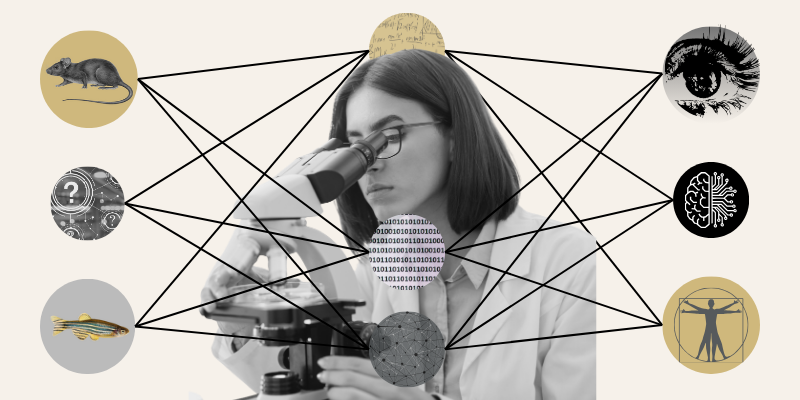Researchers at the University of Colorado School of Medicine are identifying therapies that target a specific cell death pathway, potentially leading to groundbreaking advancements in cancer treatment.
Gregory Way, PhD, MS, assistant professor of biomedical informatics, and trainee Michael Lippincott received the Interstellar Beyond Award from the Japan Agency for Medical Research and Development, an award for Interstellar Alumni who have been exceptionally productive and need additional funding to support more preliminary data collection in support of larger grant funding. This award will help expand their ongoing research, which is supported by the Interstellar Initiative.
Way explained that this award will enhance their research methods by shifting from taking static images of fixed cells—which essentially freezes the cells in time to preserve their state—to capturing time-lapse videos of live cells undergoing pyroptosis. Pyroptosis (meaning “falling into fire”) is a type of cell death that usually happens in response to infections or inflammation. By treating cells with compounds known to induce pyroptosis, they will observe the process in real time, gaining insights into the behavior of organelles during this specific type of cell death. Way added, “By observing this process, we can gain insights into what the organelles are doing to coordinate that particular death pathway.”
The Way Lab will continue to collaborate with Carla Basualto-Alarcón, MD, MSc, PhD, from the Universidad de Aysén in Chile and Masafumi Tsuboi, PhD, from the University of Tokyo in Japan. This group was formed when Way received the Interstellar Initiative Fellowship in 2022. This initiative brings together researchers from around the world to collaborate on interdisciplinary projects, paring individuals with complementary expertise. They were the first to fully characterize what cells look like when dying via a specific death pathway called pyroptosis.
Way shared, "We think that if we can better understand a specific way that brain cancer cells die, we might be able to identify therapies that either could encourage more cells to die or be more susceptible to being killed by their immune system.”
In a preprint from bioRxiv, Lippincott and the team examined how human immune cells respond to various stimuli that cause different forms of cell death. They tested 36 different combinations to induce either pyroptosis or apoptosis. They analyzed the cells in two ways: by measuring the substances they released (the secretome) and by using advanced imaging techniques to look at cell morphology (the size, shape, and structure of a cell). The lab focused on specific markers to differentiate between healthy, pyroptotic, and apoptotic cells and adapted their imaging methods to highlight Gasdermin D – a protein that forms pores (holes) in the cell during pyroptosis. These findings provided a detailed understanding of pyroptosis, showing how it overlaps and differs from apoptosis and linking changes in cell structure to what the cells release.
Lippincott shared, “Essentially by understanding how a cell’s morphology changes during pyroptosis we can better screen for therapeutics that activate or inhibit pyroptosis in cancer,” he added, “My dissertation work and this project are crucial for the betterment of human health outcomes globally and thus requires a team of global scientists. This work is not possible without the whole team of scientists that I have the privilege of learning from and interacting with.”
In addition to introducing time-lapse videos to their research, Way shared that they will highlight specific Gasdermin proteins that are important indicators of pyroptosis in animal models of an aggressive brain cancer called glioblastoma. He says the team plans to tag this protein to study its behavior during the development of glioblastoma to confirm whether or not isoforms of this protein play a role in how someone responds to brain cancer treatment.




.png)